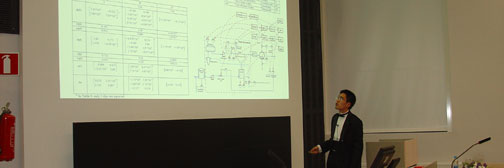| | Year 2009
Hui ChengCausal digraph reasoning for fault diagnosis in paper making applications
Fault detection and diagnosis systems are required by the process industries because of tightening global competition and the increasing complexity of the processes, which results in the difficulty for operators to perform the diagnosis tasks. Academic research in the field of fault diagnosis has expanded rapidly to meet this demand and successful applications with economic benefits have been reported extensively. As a fault diagnosis method, the causal directed graph method has proved to have considerable advantages in applications with complex processes. The causal digraph method has been subjected to three development phases: signed digraph, fuzzy digraph and dynamic digraph. Being versatile with cause-effect models, the causal digraph method is able to utilize the benefits of both qualitative and quantitative diagnosis methods. However, the latest development, the dynamic causal digraph method, still has certain drawbacks in the case of a process fault. In specific situations, the detection and diagnosis results are not always reliable or sufficient to satisfy the industrial requirements.
The aim of this thesis has been to enhance the traditional dynamic causal digraph method by developing a new fault detection approach and a new inference mechanism. The new detection approach produces better detection results and a more complete fault propagation path by taking into account the cancellation phenomenon of the different fault effects. The new inference mechanism is designed to identify possible faulty process components for the type of process fault. The proposed enhanced method has been tested on a generic paper machine simulator and the three-layered board machine simulator of Stora Enso Oyj. In the tests, a number of fault scenarios, sensor faults and process faults were using the proposed method. Finally, a comparison between the proposed method and the traditional method verified the improvements.
This info last modified 28 Apr 2024 - contact webmaster
|

